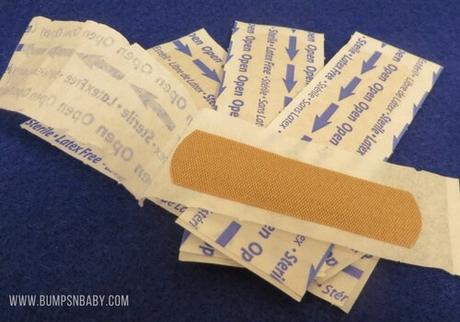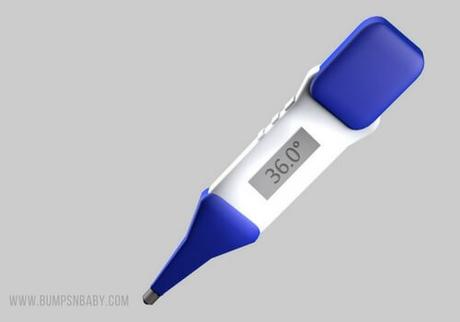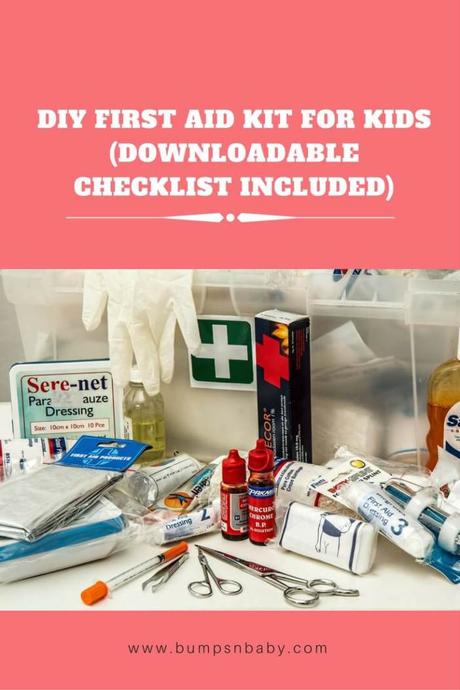Do you know about the first aid kit essentials for babies and kids?
Do you keep a first aid kit for kids at home?
While traveling, do you carry a first aid travel kit with you?
What are the must-haves in your first aid box when you have kids?
You can always buy ready-made first aid kits from pharmacies and other stores. These kits have almost all necessary items that you may require in an emergency situation.
You can make one yourself too according to your requirement, age and also considering any allergy to medicines. A personalized first aid kit as per your family needs is the best first aid kit for home or travel use.
Here I am sharing with you the must-haves in a first aid kit if you are planning to make one yourself.
What are first aid kits used for?
First aid kits are used to provide the necessary initial care during any minor injury like cuts, wounds, minor burns, abrasions, splinters, insect stings, sprains, etc.
A first aid kit also serves as a goto medical care at home when you have a common illness like fever, sore throat, nasal congestion etc.
A first aid kit should never be used to treat a serious medical condition. It only serves as a first emergency medical care until you get a proper medical help. After the first aid, if the condition is still same or worsening, you should always seek a doctor's help.
The incident that taught me the importance of a first aid box
We all are educated, we know what a first aid kit is and why it should be there with us always especially when we have kids. But sometimes we take things lightly until a situation comes and we are helpless.
I was the one who never carried a first aid kit during travel. Was overconfident or careless, I don't know why I never bothered to carry one until I met with an accident and wished I had a first aid kit to soothe my injured baby.
It was a very dark night on a high way, we were on the way to catch our train and my brother was driving the car. My younger daughter was just one plus age and was sitting on my lap. I still don't know how or what happened for a fraction of that second. Everything happened in the blink of an eye. All I can remember is the sudden jerk of the car and my daughter's head hitting the window glass. We just escaped a major accident thanks to my brother's driving skills and God's grace.
But the sudden jerk and that hitting on the glass window developed a big swelling on my daughter's forehead. She started crying and I was not able to console her.
It is a high way so no medical shop, clinics or houses nearby to seek help. Finally we reached the station ten minutes before the train arrived. Luckily I got the medicines from my co-passenger. I called my family doctor and got her advice too. We reached home safe though there was a hell lot of crying from my little girl due to the swelling and shock.
From that day I don't even step out of my house without a first aid kit even if it's within a very nearby place. Sometimes we learn the hard way!!
How to make a first aid kit for kids?
The contents of your first aid kit depends on whether it is for home use, is it for traveling or any other activity like camping or hiking. It also depends on the age of the family members and the allergies they may have.
For example, if you are camping there are chances of insect stings and bites, so medicines for these are must in a camping first aid kit and you may avoid these in a travel kit that you keep in your car or two-wheeler.
If you have a child keep first aid supplies for wounds and bruises more. Aged people in the family means more of gastrointestinal medicines, pain relievers and muscle or joint pain bandages.
The first thing is to select a box for keeping all your medical supplies. A lightweight box is the best for home use and if it has compartments even better.
For travel purpose, simple zip lock bags with the necessary supplies is preferred due to the ease of carrying and being waterproof. A speck case can be used to keep sharp or pointy objects like scissors, blades, and tweezers.
Keep the items in the first aid box or zip lock bag well organized. Always check for the expiry date of the medications and other supplies and restock as and when needed.
Keep it out of reach of children but in a place where everyone can see, including your child.
Kitchen counters are a good place to keep your first aid box. Never keep it in the bathroom due to hygiene issues and the higher humidity and water content in a bathroom.
30 First aid kit essentials you must include in your first aid kit for kids
Below are the essentials you should have in your first aid box.
#1. Adhesive bandages in assorted sizes and shapes
It's always good if you close the small scarps, cuts or wounds after cleaning. There are different size and shapes of adhesive bandages available in the market for this.
Keep a supply of bandages in assorted sizes and shapes. Like adhesive square bandage strip, rectangle ones, round ones, etc. of different sizes. A triangular bandage should be also there to use as and when necessary.
A butterfly bandage can also be included in the kit to close small cuts.
For kids, there are different colored and cartoon character imprinted ones too like the below ones from Buddsbuddy.
#2. Ointments for cuts and woundsSome wound and cuts need just an antibacterial/ antibiotic ointment. Clean the wound with running water or with wound cleaning agent, pat dry the wound with a clean soft cotton cloth or cotton ball and apply the ointment like Bacitracin, Neosporin etc. when necessary.
I would suggest consulting your child's pediatrician before buying the antibacterial ointment.
#3. Cotton balls and swabsSterile cotton balls are used to clean small wounds and bruises. Cotton swabs can be used to clean outside area of nose or ears when there is a bleeding. Never insert swabs inside nose or ear.
#4. Wound cleaning agentsVery important material to keep in a first aid kit is wound cleaning agent. First procedure in dressing is deep cleaning the wound with a proper cleaning agent. Consult a pharmacist to get a good brand.
#5.Gauze padsSome wounds will have to be covered with Gauze pads after cleaning. Gauze pads serve as protection from dirt and bacteria and also allows oxygen to reach the wounds, thus helping in quick healing.
There are many types of gauze pads available. Sponge gauze is used as padding over a wound and comes in 2*2 or 4*4 inch sizes and then there are gauzes which are already impregnated with medicines to aid fast healing. I recommend you to keep an assorted mix of different types of Gauze pads.
#6. Medical tape or surgical tapeThe pads or dressing over the wound will not stay fixed in a place without a tape fixed over it. Medical tapes are used to hold the cotton pad or gauze pads in place.
#7. Elastic bandagesThese are used for any muscular pain or any swelling.
Pediatric elastic bandages are available and they even come in different colors and patterns to reduce the anxiety of the kid who has a pain or swelling.
#8. Tablets/syrups for common illnessCommon illness like fever, cold, nasal congestion, headache etc. can be treated at home with medicines that you can keep handy after a prescription from the doctor. Visit your doctor and talk with him on what medicines and dosage you can use for treating common illnesses and keep a stock of these in your first aid box.
Some common medicines you need are antipyretic syrups, nasal congestion sprays or rubs, cough suppressants etc. Stock these medicines properly labeled with dosage as per the age of the kids and adults.
Always keep in mind that if any of the common illnesses are not getting better within 2 days or the condition of the child is getting worse, don't wait for the medicines in your first aid box to do the magic. Take the kid to the doctor immediately.
To know when you should take a child with a fever to the doctor you can go through the article fever in children. Also, you should be aware of these 8 warning signs to seek medical attention for babies and kids so that you can take them to the doctor at the correct time.
#9. Pain reliever ointment/tablets/syrupsFor kids acetaminophen or ibuprofen are used as pain relievers but I would suggest consulting your child's pediatrician before buying any pain relievers for kids.
Pain relievers like Move, Fast relief and other pain relive sprays etc. can be used to treat muscle pains in adults.
#10. Medicines for stomach issueMedicines for gastric problem, constipation, stomach upset and loose motion etc. should be kept in the first aid kit.
For babies and infants consult your pediatrician and keep a bottle of colic medicines with the correct dosage and instructions to use during emergencies.
#11. Rehydrating fluid packsIn case of loose motion, vomiting etc. an oral rehydrating solution like ORS, Pedialyte etc. comes handy. Keep a few packs ready in your box.
#12. Instant cold pack/ instant cold compressesMinor swelling and pain from strains and sprains can get a temporary relief with application of cold compresses on them. Keep 2 or 3 cold packs in your first aid box.
#13. Eye protectionSterile eye wash and clean water help to clean eyes as first aid. Keep a bottle of eye wash for emergency situations like chemicals or foreign substances getting into the eye.
#14. Sprays or ointments for burnsWhen burns occur immediate action can decrease the degree of skin damage. A spray or ointment for burns should be also included in the first aid box.
#15. Thermometer
It's always best to have a digital thermometer at home and your travel kit.
#16. Scissors and safety pinsScissors help for cutting the dressing materials. Go for small sharp scissors with blunt ends.
Safety pins can be used to secure bandages.
#17. Latex glovesAlways cover your hands with gloves before dressing or any first aid you perform.
#18. Wet wipesThese replace water most of the times. It's enough if you just wipe the dust or mud from the wound using a wet wipe when running water is not easily available.
Use an alcohol free wet wipe for wounds and cuts. If you can get an antibacterial wet wipe its even better.
#19. Hand SanitizerThis helps to keep the hands clean before and after dressing.
#20. Rubbing alcoholRubbing alcohol can be used to clean scissors, tweezers etc. Never use rubbing alcohol on open cuts or wounds.
#21. Calamine lotionA small bottle of calamine lotion helps you when there is any itching or irritation of the skin. It can be used for diaper rash too.
#22. Measuring cups or oral syringesA medicine measuring cup or oral syringe comes handy when medicines in syrup forms are to be administered. Keep one handy.
#23. Nasal bulb syringeA Nasal bulb syringe helps to open congested nose in babies and infants.
#24. TweezersTweezers can be used to remove splinters, stings etc. Tweezer with narrow point and a good grip is the best.
#25. Personal medicationsIf your child has a food allergy, pollen allergy or if your child has asthma, please make sure that he has his doctor prescribed EpiPen or inhalers kept in the first aid kit. Both in the home kit and travel kit.
#26. Emergency contact numberEmergency phone numbers sound be written on a piece of paper stuck to a first aid box for easy access. Help line numbers, family doctor's number, ambulance, and fire department numbers, and parent's phone numbers are a few.
#27. Medical recordApart from the above-mentioned things a copy of your medical record, allergy information, and blood group information should be kept in a first aid box especially while traveling. At emergency situations, these records help strangers and doctors to help you in a correct way.
#28. A first aid instruction manualA small pocket book with details about CPR execution, first aid for choking, first aid for burns, wound cleaning instruction etc. should be kept so that you can refer quickly when in need. You should read the booklet beforehand and familiar with what is in which page so that it will be easy in a panic situation.
#29. A small flashlightMost of the mobiles do have flashlights now but still it is safe to keep a small handheld flashlight in the emergency kit especially while traveling.
#30. A first aid blanket or thermal blanketThough it is not usually kept in a home first aid kit, a thermal blanket can be of great use when camping or traveling to colder places with kids. In incidents of a hypothermia or shock, these blankets can be used. They are very lightweight and packed in a compact way to fit in a first aid box.
So these are the must-haves you should include in a first aid kit contents list. You can download the printable first aid kit checklist from here.
Points to remember
- Make a first aid box as per the age and medical history of the kid
- Keep the first aid box in a place visible to everyone
- Keep it out of reach of children
- Know how to use the items properly
- Know when to use the items in the first aid kit
- Consult your doctor before buying any oral medicines for your first aid box
- Restock as and when the supplies finish or reach expiry date
- Organize your first aid kit according to the use - home kit or travel kit
- After first aid, please consult a doctor if the condition is not getting better
I hope you now got an idea on how to make a personalized first aid kit for kids.
Do keep a first aid box at home to use in emergencies. A first aid given at the right time is crucial to prevent the condition from worsening.
If you do not want the hassle of putting together each component of the first aid for your baby/kid, we recommend Buddsbuddy first aid kit containing 39 first aid related products pieces like gauze swabs, thermometer, santizer, bandages etc.
The tight hygiene carry box is very handy when you are at home or travelling. The products could be refilled as and when they are over, hence making this Buddsbuddy first aid completely reusable. We highly recommend Buddsbuddy first aid available in various colors and 39/15 piece set.
Do you keep a first aid kit for kids at home? What are the first aid kit essentials that I have missed to mention here?

